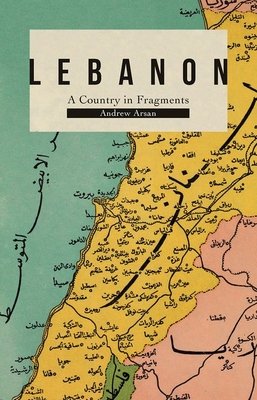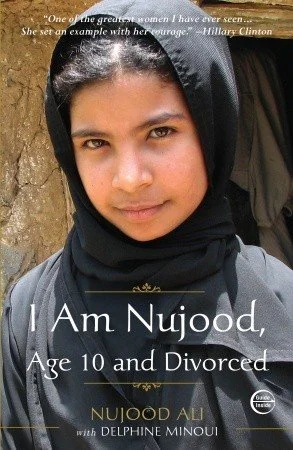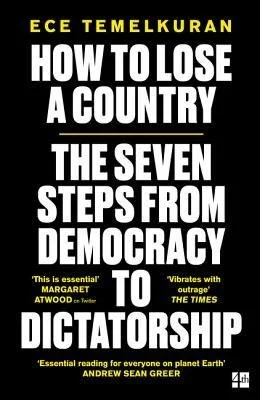REVIEW | Lebanon: A Country in Fragments by Andrew Arsan
AUTHOR: Andrew Arsan
GENRE: Nonfiction
ISBN: 1787383652
RELEASE DATE: May 1st 2020
PAGES: 520 PAGES
EDITION LANGUAGE: English
★★★★
I read this book as part of the *From and About Asia Reading Project*.
When searching for books about Lebanon, one question was always in my mind: after the infamous Lebanese Civil War, what does life in Lebanon look like now? There aren’t many options of it, since most of the books on Lebanon are written about Civil War, and the people are still living under the shadow of it. So I’m glad I found Lebanon: A Country in Fragments.
Unnamed Road, Nabatiyeh El Tahta, Lebanon
by Nina Abdel Malak on Unsplash
This book provides a very good overview of Lebanon in the most recent years. Opening with a powerful (but heartbroken) recount of how many civilians died due to the continuous conflict and how many major changes happened in Lebanon politics in the recent 13 years, the book has two parts.
The first part “The Time of Politics”
It is, by its name, focuses on the political side of things, talking about the political reality of Lebanon in the recent 15 years after 2005. In 2005, Rafiq Hariri, who was the Prime Minister of Lebanon for 10 years after the Civil War, was assassinated. And it became the prologue of a series of assassination and power play among politicians.
This part is fast-paced with a lot of name-dropping. With no background in middle eastern politics, I found it hard to follow at first. But after some quick googling and distinguishing among different groups, I was able to follow through with no problem. And I think the book did a very good job of providing us with reasons behind all the conflicts and wars. Especially the international powers that influenced it.
Located between Syria and Israel, Lebanon is constantly influenced by these two neighbors (and many more countries far away). Especially the Syrian Revolution, which directly led to huge numbers of refugees traveling to Lebanon for shelter. The book did a good job explaining the relations Lebanon has with other countries as well as the different stands each politician and parties hold. It helps to understand the background of each conflict and fight.
It’s interesting to think that the Hariri regime used to want to build Lebanon as a Switzerland in the Middle-east, a peaceful and beautiful traveling country. And it’s devastating to read about what happened to the plan.
The book also showcased the conflict’s impact on civilians with many examples, and also raised the issue of false representation and misinformation which I really liked. For instance, after a bombing session in south Beirut, many people had to flee from their homes and their houses are destroyed. A picture called “Affluent Lebanese drive down the street to look at a destroyed neighborhood 15 August 2006 in southern Beirut” was captured by American photographer Spencer Platt. In which you can see four people riding in a car in the ruins, with other people who seemed poor and helpless in the background. But this is, indeed, a false titled picture because later in an interview, the driver stated that they are also, people who lost their homes during the bombing, simply returning to survey the damage.
Douma, Lebanon by Paul Melki on Unplash
The Second Part
“The Time of Everyday“
the second part switched on to the livelihood side, presenting us a picture of how people lived. It covers economy and spaces, refugees and migrant workers, and other social issues. This part is a little different than I thought it would be, I was expecting more examples from real people, individual stories. But this is a heavy nonfiction book from the macro side after all. Although I didn’t get many stories in this part, I was happy to learn about the city structure in contemporary Lebanon, the conditions of refugees, and some other interesting events, like the trash crisis in Beirut that I’ve never heard of.
However, it was very hard for me to piece together Lebanon’s livelihood as a whole from reading it. The sections seem very divided. Jumping from poor civilians life who can barely provide for themselves but at the same time, they all drive cars to go around. All of a sudden jumped to the rich people's stories who live in modern houses and hire many maids. And returning back to the life of refugees, not only that, different kinds of refugees and one’s condition can be so much worse than the others. I still don’t know if the book was structured in a confusing way, or it’s all because Lebanon has so many divisions and people’s lives are so disconnected (I have a sense it’s because of the latter though).
But the numbers in this section are shocking, and I loved that there are so many of them. For example, to show the sharp inequality of wealth and status, the book stated fancy set dinners in a luxurious restaurant can be $57 per person in 2011, whilst average professionals earn about $500 a month. Not counting the poverty and unemployed. Refugees, on the other hand, are considered lucky if they are able to get work and earn half the salary.
A very interesting section in the second part is called “On Waste and the Lebanese Body Politic”. In 2015, Beirut stopped collecting trash all of a sudden. That led to the overflowing trash on the street across the entire city. This event is hard to imagine but it also shows how fractured Lebanon was.
Overall I really liked this book, I think it’s informative and detailed enough for me to learn about Lebanon in recent years, with examples to help to understand, and provides the fact that is both shocking and reflecting. If you want to learn about Lebanon post-Civil War, I would highly recommend this book.
Raouche Rocks, Beirut, Lebanon by Ramy Kabalan on Unsplash








